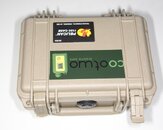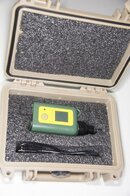- Messages
- 54,467
- Reaction score
- 8,570
- # of dives
- 500 - 999
Or get one yourself. O2 sensors last longer stored in one.great product but with how cheap pelican cases are it would be a really nice gesture if they shipped it in a waterproof case....
Welcome to ScubaBoard, the world's largest scuba diving community. Registration is not required to read the forums, but we encourage you to join. Joining has its benefits and enables you to participate in the discussions.
Benefits of registering include
Or get one yourself. O2 sensors last longer stored in one.great product but with how cheap pelican cases are it would be a really nice gesture if they shipped it in a waterproof case....
Nope, and sadly too many fill stations aren't aware.How does CO end up in the tank? Is this only a problem of gas powered compressors sucking in their own exhaust fumes?
How does CO end up in the tank? Is this only a problem of gas powered compressors sucking in their own exhaust fumes?
I use the SensorCon tester and don't have any problem checking from my tank or regulator. Just don't blast the air into the sensor or you will get a false reading.
On a side note I just went to Cozumel to go cave diving. I got there a few days ahead of my buddies and had planned to do some diving. Just prior to leaving I got sick and had a head cold so I was stuck not being able to dive till the day before they got there. I got on a dive boat for a reef dive and I analyzed my tanks for Co and O2. I was just diving air. I was amazed at the number of people diving Nitrox on the boat and what really blew my mind was that not one of them analyzed their tanks for anything. They just took the word of the DM / crew that the mixes were right.
Wow! And I have seen divers there who thought they were on air for the deeper dive only to learn after that they were on their nitrox tanks. It's just safer to check every tank for O2 and CO.I use the SensorCon tester and don't have any problem checking from my tank or regulator. Just don't blast the air into the sensor or you will get a false reading.
On a side note I just went to Cozumel to go cave diving. I got there a few days ahead of my buddies and had planned to do some diving. Just prior to leaving I got sick and had a head cold so I was stuck not being able to dive till the day before they got there. I got on a dive boat for a reef dive and I analyzed my tanks for Co and O2. I was just diving air. I was amazed at the number of people diving Nitrox on the boat and what really blew my mind was that not one of them analyzed their tanks for anything. They just took the word of the DM / crew that the mixes were right.


Thank you for the advise.Divenav now needs to get the word out, and products on shelves in diveshops.
